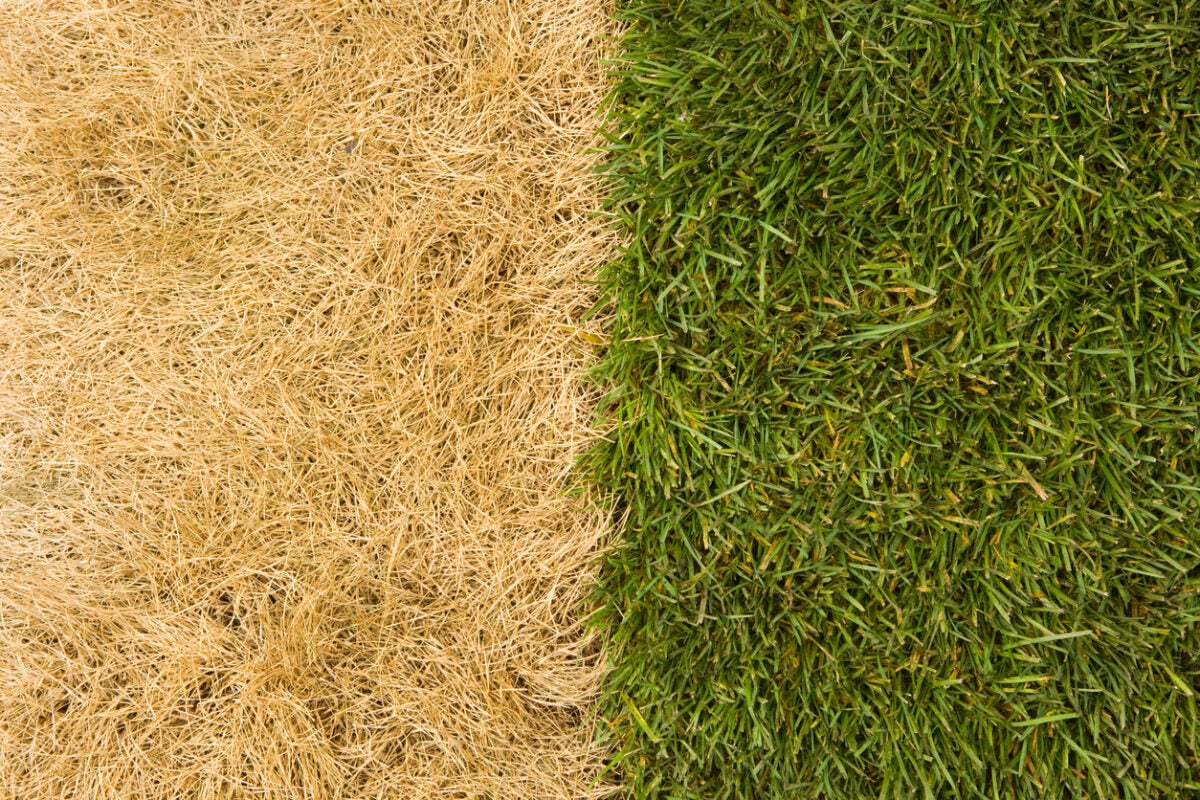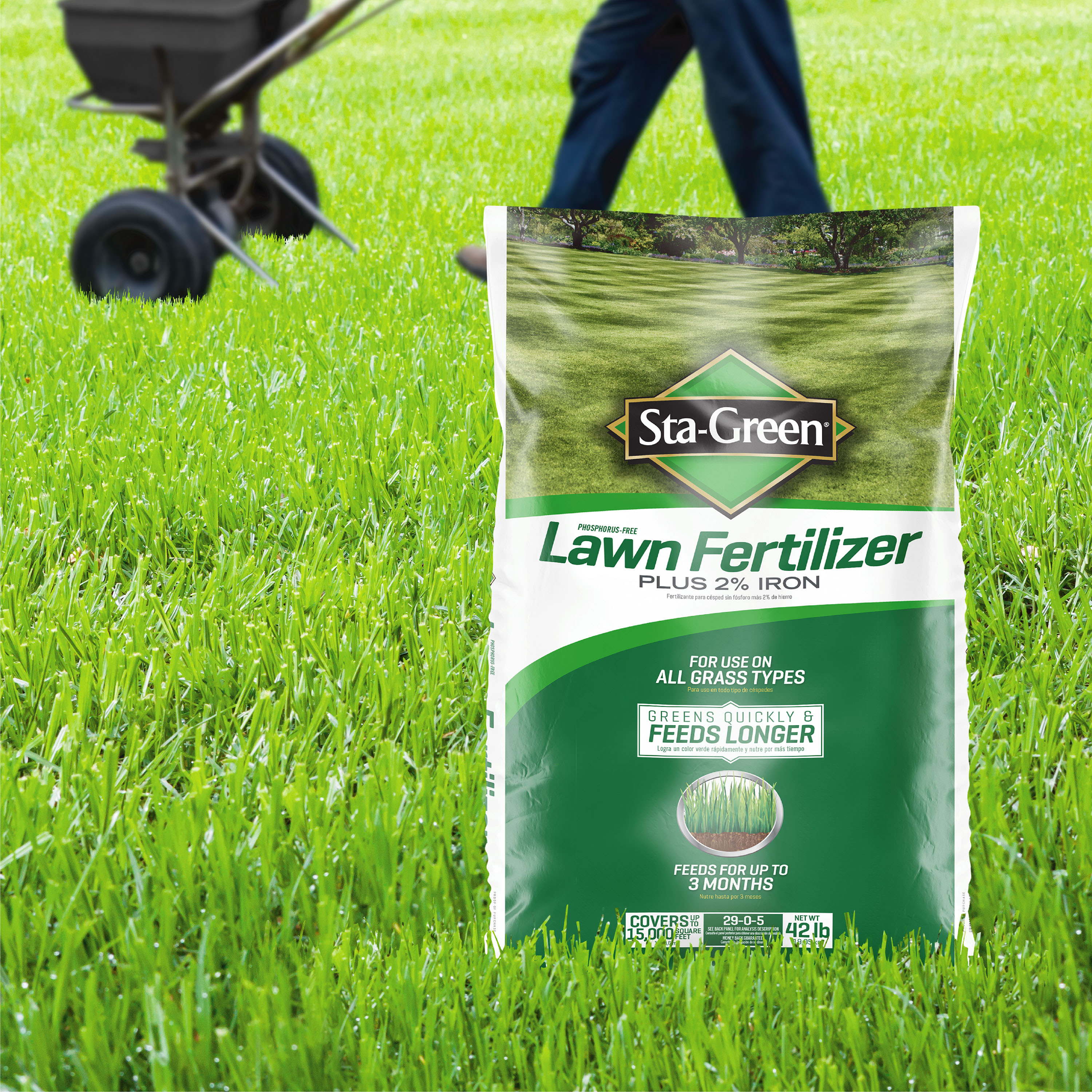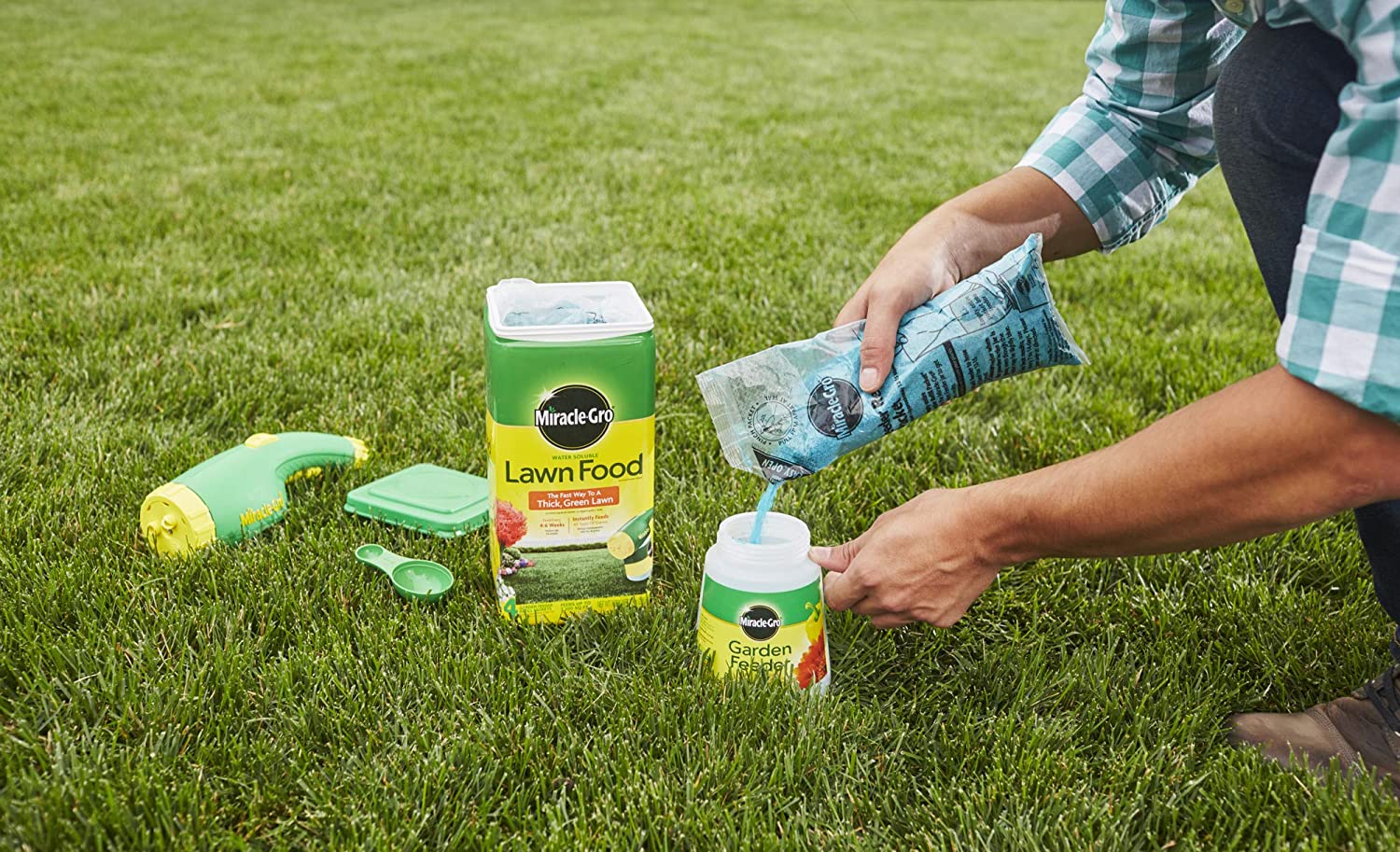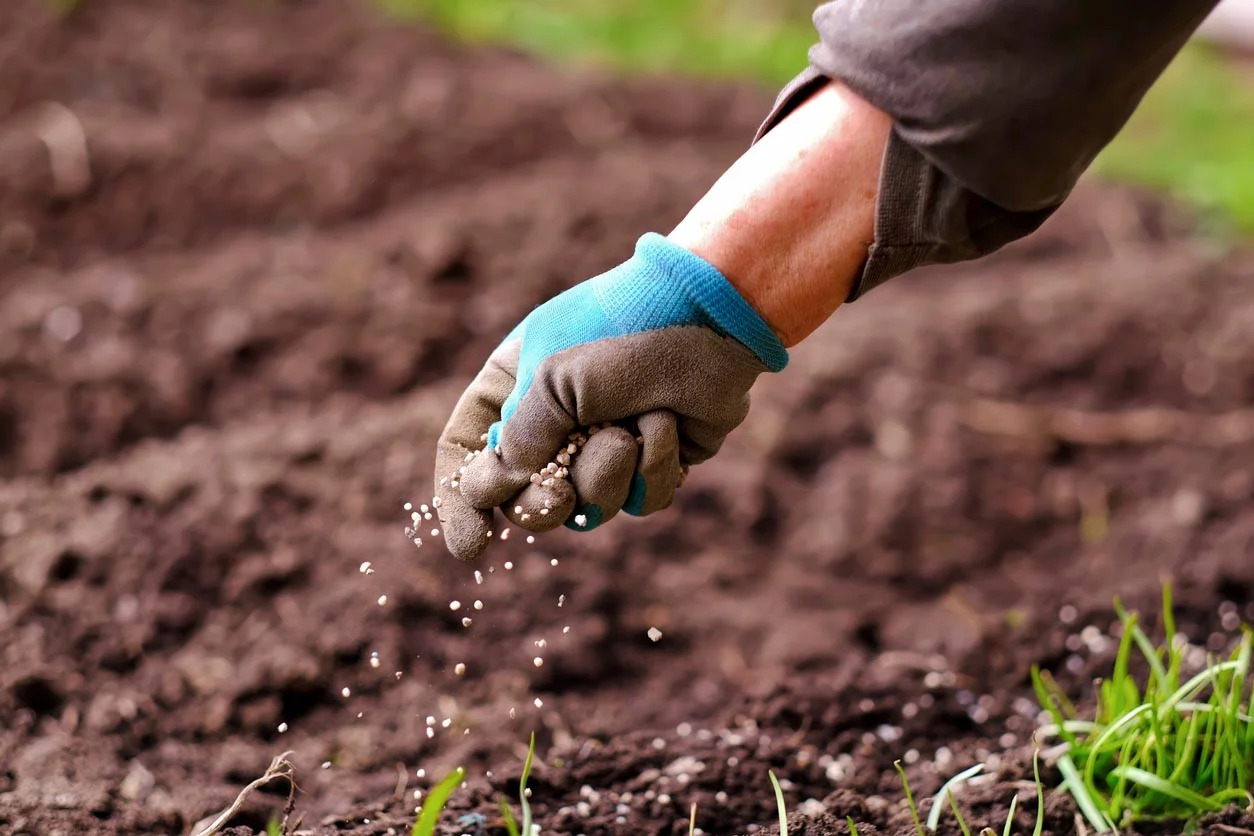Home>Gardening Tips and Tricks>How To Fix Grass Burned By Fertilizer


Gardening Tips and Tricks
How To Fix Grass Burned By Fertilizer
Modified: January 22, 2024
Discover effective solutions to revive grass burned by fertilizer with our comprehensive problem-solving guide. Revitalize your lawn and restore its lush green appearance today!
(Many of the links in this article redirect to a specific reviewed product. Your purchase of these products through affiliate links helps to generate commission for Chicagolandgardening.com, at no extra cost. Learn more)
Table of Contents
Introduction
Having a lush, green lawn is a source of pride for many homeowners. It enhances the overall curb appeal of your property and provides a relaxing space for outdoor activities. However, maintaining a healthy lawn can sometimes be challenging, especially when it comes to dealing with grass burn caused by fertilizer.
Grass burn occurs when the application of fertilizer exceeds the recommended rate or when the fertilizer comes into direct contact with the grass blades. It leads to the discoloration and even death of the affected grass, creating unsightly brown patches in your once-vibrant lawn.
Fortunately, all hope is not lost if you find yourself facing grass burn. By understanding the underlying causes and taking the right steps, you can fix the damage and restore your lawn to its former glory.
In this article, we will delve into the causes of grass burn from fertilizer, assess the extent of the damage, and provide a comprehensive guide on how to fix grass burned by fertilizer. You’ll learn practical steps and techniques to revive your lawn and prevent future damage.
Whether you’re a seasoned gardener or a novice lawn enthusiast, this article offers valuable insights and solutions to address grass burn issues. So, let’s dive in and discover how to rescue your lawn from the clutches of fertilizer-induced damage.
Understanding Grass Burn from Fertilizer
Before we delve into the steps to fix grass burn, it’s crucial to understand the underlying causes of this issue. Grass burn occurs when the concentration of fertilizer becomes too high, resulting in damage to the grass blades. This can happen due to several factors:
- Overapplication of fertilizer: Applying more fertilizer than the recommended rate can overwhelm the grass, leading to burn. Excessive amounts of nitrogen, phosphorus, or potassium can have detrimental effects.
- Uneven spreading: Poor distribution of fertilizer can result in localized concentrations that are too high for the grass to handle.
- Hot weather: High temperatures, coupled with the presence of excess fertilizer, can amplify the burning effect on the grass.
- Improper watering: Insufficient watering after applying fertilizer can exacerbate burn, as the grass lacks the necessary moisture to cope with the concentrated nutrients.
Recognizing the signs of grass burn is essential for effective treatment. Typically, burnt grass will exhibit yellow or brown patches, with the edges of the affected areas appearing withered or scorched. It’s important to note that these symptoms can also indicate other lawn issues, such as disease or pests. Therefore, it’s crucial to assess the situation carefully before taking any remedial actions.
Now that we have a better understanding of how grass burn occurs, let’s move on to the next section, where we will explore how to assess the damage caused by fertilizer and determine the appropriate course of action.
Assessing the Damage
Before you can effectively address the issue of grass burn from fertilizer, it’s important to assess the extent of the damage. This will help you determine the appropriate steps to take for restoration. Here’s how you can assess the damage caused by fertilizer:
- Inspect the affected areas: Take a close look at the areas of your lawn that have been impacted by grass burn. Look for signs of discoloration, wilting, or death of the grass blades. Pay attention to the size and shape of the affected patches to determine the severity of the damage.
- Check the surrounding areas: Examine the grass around the affected patches to see if the burn has spread. This will help you determine whether the damage is localized or if it requires broader treatment.
- Assess the timing of the damage: Consider when the grass burn occurred. If it happened recently, there is a higher chance of recovery compared to older, more severe cases.
- Consider the condition of the soil: Evaluate the quality of the soil in the affected areas. Factors such as pH levels, nutrient deficiencies, and compaction can impact the grass’s ability to recover.
Based on your assessment, you can classify the damage as mild, moderate, or severe. Mild damage typically involves small, isolated patches of burnt grass that can recover with minimal intervention. Moderate damage may require more intensive treatment and care to help the grass rebound. Severe damage indicates extensive burn and may necessitate more aggressive measures such as overseeding or sodding.
By thoroughly assessing the damage, you will gain valuable insights into the severity of the situation and be better equipped to implement the appropriate steps for grass burn remediation. In the next section, we will explore the step-by-step process to fix grass burned by fertilizer.
Steps to Fix Grass Burned by Fertilizer
Dealing with grass burn from fertilizer can be a daunting task, but with the right approach, you can restore your lawn to its former health and beauty. Follow these step-by-step instructions to fix grass burned by fertilizer:
- Immediate Action: As soon as you notice grass burn, stop applying any more fertilizer to the affected areas. This will prevent further damage and allow you to focus on remediation.
- Flushing with Water: Thoroughly water the burned areas to dilute and flush out the excess fertilizer. Use a gentle sprinkler or hose attachment to avoid causing additional stress to the grass.
- Applying a Neutralizing Agent: If the grass burn is still in its early stages, you can apply a calcium-based or gypsum-based neutralizing agent to help counteract the effects of the fertilizer.
- Restoring Soil pH: Test the soil pH in the affected areas and make any necessary adjustments. If the soil pH is too acidic or alkaline, consider applying lime or sulfur to bring it back to the optimal range for grass growth.
- Revitalizing the Grass: Implement targeted lawn care practices to promote grass recovery. This may include overseeding or reseeding the affected areas, providing adequate moisture, and applying a balanced fertilizer at the appropriate rate.
- Maintaining Proper Fertilization Practices: Going forward, take preventive measures to avoid future grass burn from fertilizer. Follow the recommended application rates, ensure even distribution, and tailor your fertilizer regimen to suit your specific grass type and environmental conditions.
Remember, the time it takes to repair grass burn can vary depending on the severity of the damage and the effectiveness of your remediation efforts. Be patient and consistent in your lawn care practices, and you’ll soon start seeing signs of recovery.
By following these steps, you can effectively address the issue of grass burn from fertilizer and bring your lawn back to its healthy, vibrant state. In the next section, we will wrap up our discussion and provide some final thoughts on preventing future grass burn.
Immediate Action
When you notice grass burn from fertilizer, it’s crucial to take immediate action to prevent further damage and begin the process of recovery. Here are the steps you should follow:
- Stop applying fertilizer: Once you discover the grass burn, immediately cease any further application of fertilizer in the affected areas. Continuing to fertilize will only exacerbate the damage and hinder the recovery process.
- Remove excess fertilizer: If there are visible clumps or piles of fertilizer on the grass, carefully remove them using a rake or gloved hands. Be gentle to avoid causing additional stress to the grass blades.
- Water the damaged areas: Thoroughly water the affected areas to flush out and dilute the excess fertilizer. This will help prevent further burning and start the process of removing the concentrated nutrients from the grass. Use a gentle sprinkler or hose attachment and ensure that the water penetrates deep into the soil.
- Avoid mowing: Refrain from mowing the lawn in the burned areas for a few weeks. Mowing can cause further stress to the grass, which is already trying to recover from the damage. Allow the grass to grow a bit longer to aid in its rejuvenation.
- Keep pets and children off the affected areas: To avoid compaction and additional stress to the damaged grass, restrict access to the burned areas. This will give the grass a chance to recover without interference.
By promptly taking these immediate actions, you can minimize further damage and create a favorable environment for the recovery of your grass. These steps provide the foundation for the subsequent remediation measures that we will discuss in the following sections.
Flushing with Water
After taking immediate action to address grass burn from fertilizer, the next step is to flush the affected areas with water. This will help dilute and remove the excess fertilizer from the grass and soil. Follow these guidelines for effective flushing:
- Timing: Begin the flushing process immediately after discovering the grass burn. The sooner you flush the area, the more effective it will be in reducing the concentration of fertilizer.
- Watering technique: Use a gentle sprinkler or hose attachment to water the damaged areas. Avoid using high-pressure jets or strong streams of water, as they may further stress or damage the grass blades.
- Water quantity: Apply enough water to thoroughly saturate the soil and ensure it penetrates deep into the root zone. This will help dilute the concentrated nutrients and carry them away from the grass.
- Frequency: Depending on the severity of the grass burn, you may need to flush the affected areas multiple times. Continue the flushing process until you no longer see excessive fertilizer residue on the grass or in the soil.
As you flush the areas, monitor the water runoff to ensure it’s carrying away the excess fertilizer. If you notice the water draining slowly or pooling in certain spots, it may indicate soil compaction or drainage issues. In such cases, consider aerating the soil or improving the drainage to assist in the recovery process.
It’s important to note that while flushing with water is an effective method to remove excess fertilizer, it may also leach away some essential nutrients from the soil. As a result, it’s necessary to replenish the nutrients through subsequent steps, such as restoring soil pH and applying balanced fertilizer in the later stages of the remediation process.
Flushing the burned areas with water is a critical step in the recovery process. By diluting and removing the excess fertilizer, you create a healthier environment for your grass to recover from the burn. In the next section, we will discuss the application of a neutralizing agent to further aid the healing process.
Applying a Neutralizing Agent
Once you have flushed the affected areas with water, the next step in fixing grass burned by fertilizer is to apply a neutralizing agent. A neutralizing agent helps counteract the effects of the excess fertilizer and restore a more balanced pH level in the soil. Here’s how to apply a neutralizing agent:
- Choose the right neutralizing agent: Select a calcium-based or gypsum-based product to neutralize the acidic effects of fertilizer burn. These agents can help restore the soil’s pH balance and provide necessary nutrients to the grass.
- Read the instructions: Carefully follow the instructions provided on the product packaging. These guidelines will specify the recommended application rate, timing, and any additional precautions.
- Apply evenly: Distribute the neutralizing agent evenly over the affected areas, following the recommended application rate. Use a spreader or your gloved hands to ensure thorough coverage.
- Water the area: After applying the neutralizing agent, water the areas once again to help activate the product and facilitate its absorption into the soil. This will aid in balancing the pH levels and reducing the effects of the fertilizer burn.
Applying a neutralizing agent serves two purposes: it neutralizes the acidic effects of the excess fertilizer on the grass and promotes the replenishment of nutrients in the soil. These agents can also improve soil structure, enhance root development, and foster the growth of beneficial microorganisms.
It’s important to note that neutralizing agents may not be necessary in all cases of grass burn from fertilizer. If the burn is mild and the pH levels of the soil are within an acceptable range, you can skip this step and focus on other remediation measures. However, if the damage is severe or the soil pH is imbalanced, applying a neutralizing agent can significantly aid in the recovery of your grass.
By applying a neutralizing agent, you take additional steps towards restoring the health of your grass and reversing the effects of the fertilizer burn. In the next section, we will discuss how to restore the soil pH to create a more conducive environment for grass growth.
Restoring Soil pH
One of the crucial steps in fixing grass burned by fertilizer is restoring the pH balance of the soil. When the soil pH is imbalanced, it can hinder the grass’s ability to absorb nutrients properly and impede its overall health. Here’s how you can restore the soil pH:
- Test the soil: Use a soil testing kit or send a sample to a lab to determine the current pH levels of the soil in the affected areas. This will help you understand if the pH is too acidic or alkaline.
- Adjusting acidity: If the soil is too acidic, meaning it has a low pH, you can raise the pH level by applying lime. Lime helps neutralize the acidity and brings the pH towards a more neutral range. Follow the recommended application rate based on the test results.
- Adjusting alkalinity: If the soil is too alkaline, meaning it has a high pH, you can lower the pH level by applying elemental sulfur. Sulfur helps acidify the soil and bring the pH towards a more neutral range. Again, follow the recommended application rate based on the test results.
- Incorporate the amendments: After applying lime or sulfur, use a rake or garden fork to gently work the amendments into the soil. This will ensure their distribution throughout the root zone and proper interaction with the soil particles.
- Water the area: After incorporating the amendments, water the area thoroughly to aid in the absorption and activation of the lime or sulfur. This will facilitate the pH adjustment process and create a favorable environment for grass growth.
Restoring the soil pH is crucial for providing an optimal environment for your grass to thrive. Adjusting the pH levels helps ensure the availability and uptake of essential nutrients from the soil, promoting healthy growth and recovery.
It’s important to note that adjusting soil pH is a gradual process and may require multiple applications over time to achieve the desired pH balance. Regular soil testing will help you monitor the progress and make any necessary adjustments.
By restoring the soil pH, you create a more favorable environment that supports the recovery of your grass from the effects of fertilizer burn. In the next section, we will discuss how to revitalize your grass and promote its growth and health.
Revitalizing the Grass
After taking steps to address the fertilizer burn and restore the soil pH, it’s time to focus on revitalizing the grass and promoting its growth and health. Here are effective measures to help rejuvenate your lawn:
- Overseeding or reseeding: If the grass burn has caused significant damage or bare patches, overseeding or reseeding may be necessary. Choose quality grass seed that matches the existing lawn and follow the recommended seeding rates. Keep the newly seeded areas consistently moist until the grass establishes.
- Proper watering: Provide your lawn with adequate and consistent moisture to support growth and recovery. Water deeply and infrequently, promoting deep root development. Avoid overwatering, as it can lead to fungal diseases and weak grass growth.
- Regular mowing: Once the new grass starts to grow, resume regular mowing, ensuring that the blades are set at the appropriate height for your grass species. Avoid cutting more than one-third of the grass blade’s length in a single mowing session to prevent stress and scalping.
- Applying balanced fertilizer: As the grass regains its strength, apply a balanced fertilizer at the recommended rate. Choose a fertilizer formula that suits your grass type and follow the application instructions to provide the necessary nutrients for healthy growth.
- Avoiding excessive fertilization: Be cautious not to repeat the same mistake that led to the grass burn. Follow the recommended fertilization schedule and avoid overapplication. Remember that too much fertilizer can harm your lawn, so less is often more.
- Maintaining optimal cultural practices: Practice proper lawn care techniques such as aerating, dethatching, and controlling weeds. These practices help improve soil health, increase nutrient availability, and minimize stress on the grass.
Revitalizing your grass will take time and consistent effort. Be patient and persistent in your lawn care routine, and you will gradually see the improvement and recovery of your lawn.
Lastly, it’s important to maintain proper lawn maintenance practices to prevent future grass burn. This includes following the recommended fertilization schedule, monitoring soil pH regularly, and being attentive to signs of nutrient deficiencies or excesses.
By implementing these revitalization measures and adopting good lawn care practices, you can restore your grass from the effects of fertilizer burn and enjoy a healthy, vibrant lawn once again.
Maintaining Proper Fertilization Practices
Preventing future grass burn from fertilizer is essential to ensure the long-term health and vitality of your lawn. By maintaining proper fertilization practices, you can provide your grass with the necessary nutrients without causing harm. Here are some key guidelines to follow:
- Know your grass: Different grass species have different nutrient requirements. Understand the specific needs of your grass type, including its preferred pH range, nutrient requirements, and growth habits.
- Soil testing: Regularly conduct soil tests to determine the nutrient levels and pH of your soil. This will help you make informed decisions about the type and amount of fertilizer to apply.
- Follow recommended rates: Read the instructions on the fertilizer packaging and strictly adhere to the recommended application rates. Avoid the temptation to apply more fertilizer, thinking it will provide better results. Excessive fertilizer can lead to nutrient imbalances and grass burn.
- Even distribution: Apply the fertilizer evenly across your lawn to prevent localized concentrations that can cause burn. Use a spreader or handheld spreader to ensure an even and uniform distribution.
- Timing is key: Apply fertilizer at the right time, taking into consideration the specific needs of your grass and regional climate. Avoid fertilizing during periods of heat or drought stress, as this can increase the risk of burn.
- Watering after application: Water your lawn after fertilization to help the nutrients penetrate the soil and prevent potential burn from direct contact with the grass blades. This will also aid in the uptake of the nutrients by the grass roots.
- Consider slow-release fertilizers: Slow-release fertilizers provide a steady supply of nutrients to the grass over time, minimizing the risk of burn and preventing nutrient leaching. These types of fertilizers ensure a more balanced and sustained feeding approach.
- Fertilize responsibly: Be mindful of the environmental impact of fertilizers. Avoid fertilizing near water bodies or on slopes where runoff can occur. Follow local regulations and best practices for responsible fertilizer use.
Maintaining proper fertilization practices is a key component of a healthy lawn. By providing the right nutrients in the right amounts and following recommended guidelines, you can promote vigorous grass growth, minimize the risk of burn, and contribute to the overall well-being of your lawn.
Remember, a green and lush lawn is not solely dependent on fertilization. It is equally important to implement other essential lawn care practices such as regular watering, mowing at the appropriate height, and addressing any pest or disease issues promptly.
By adopting a holistic approach to lawn maintenance and implementing proper fertilization practices, you can keep your grass looking its best and ensure a vibrant, beautiful lawn for years to come.
Conclusion
Dealing with grass burn from fertilizer can be a frustrating experience, but with the right knowledge and actions, you can restore your lawn to its former health and beauty. Remember these key points as you tackle the issue:
First, understand the causes of grass burn, including overapplication of fertilizer, uneven spreading, hot weather, and improper watering. Recognizing these causes will help you prevent future instances of burn.
Next, assess the damage by inspecting the affected areas, checking the surrounding grass, and considering the timing and condition of the soil. This evaluation will guide you in determining the appropriate course of action.
Take immediate action by stopping the application of fertilizer, removing excess fertilizer, and flushing the affected areas with water. This step will halt further damage and create a healthier environment for recovery.
Apply a neutralizing agent to counteract the effects of the fertilizer and restore the soil’s pH balance. Restoring the pH is crucial for grass growth and nutrient absorption.
Revitalize the grass through overseeding or reseeding, proper watering, regular mowing, and applying balanced fertilizer. These measures will promote the growth and recovery of your lawn.
Maintain proper fertilization practices by knowing your grass type, conducting soil tests, following recommended rates, ensuring even distribution, and timing the application appropriately. Responsible fertilization will prevent future grass burn and promote healthy growth.
By implementing these steps and maintaining a proactive approach to lawn care, you can overcome grass burn from fertilizer and achieve a thriving and lush lawn. Remember that patience and consistency are key in the recovery process. With time and proper care, your lawn will regain its vibrancy and become the envy of the neighborhood.









